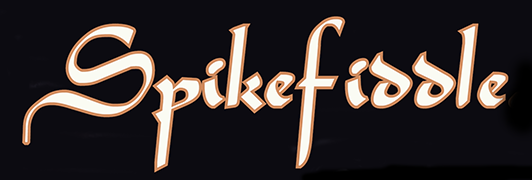Long Neck Tarhu
Long Neck Tarhu - 1995
Background
The first tarhu was a long necked instrument (800mm string-length) fretted in the Turkish system of 27 tones to the octave. It had a carved lute-shaped body and 4 playing strings with 8 sympathetic strings. Various other stringing configurations were explored in the early years, with the original setup proving to be the most useful. The current semi-spherical body became standard for all tarhus in 1998, so all the essential elements of the design were in place by this time. Unlike most other tarhu designs which involved some level of collaboration with other musicians, the longneck tarhu design was the product of Peter Biffin’s own work as instrument maker and musician.
String-Lengths
The vibrating string lengths requested have covered quite a range over the years. Instruments made for yayli tanbur players were as long as 1000mm, those for cello players as short as 650mm. The “standard” length remained 800mm which is the maximum length available using cello strings. A huge range of tuning options are possible, depending on musical requirements and the strings selected.
Playing Strings
Cello strings have been used throughout the longneck tarhu’s history. The first (highest) string is usually either plain steel or a cello E string (from a 5-string cello set). The remaining strings are selected from cello 1, 2, 3 or 4 strings depending on the tuning required. The lowest pitch commonly used is the A a minor third below cello C, and the highest pitch around cello A.
Sympathetic strings
Sympathetic strings are of plain steel/brass in a range of gauges. These strings sound best if the tension is kept low, which also means that breakages are very uncommon. The sympathetic strings are usually tuned to whichever scale is being played, or alternatively to a selection of chromatic notes when the music played involves a lot of modulation
Spikes
Spikes of various lengths can be used, depending on the holding position being used. A spike that sits on the floor can be quite useful as it allows the instrument to be comfortably held much lower. Instead of sitting it on top of the thighs, it can then be held between the knees so that the bow moves across just above knee height. This can significantly reduce strain on the left arm when reaching notes at the top of the neck, especially for shorter players.
Playing Styles
The long neck tarhu was the first instrument in the tarhu family to be created. Its design brought together two different streams of stringed instrument playing: the long slender neck allows 2½ octaves to be played on a single string with the melodic fluidity encountered on traditional instruments that employ along-the-string techniques (as in tanbur and erhu); the use of 4 playing strings facilitates across-the-strings playing (as in the violin family), and extends the range of easily available notes to over 4½ octaves.
When the tarhu’s acoustic properties are combined with the wide range of available playing techniques, the result is an instrument that is capable of playing many styles of music inspired by both East and West. The long neck tarhu can be played using bow, several different forms of plectra, and fingerstyle
Fretted and Fretless
Fretted
Traditionally, long-necked bowed instruments are fretted with threads tied around the neck, and this method has been found quite suitable for the tarhu. Many different tuning systems are available using tied frets, as the threads are moveable, and frets are easily added or removed. Systems range from 12 tones to the octave, thru to traditional Turkish tanbur fretting of 27 notes to the octave. When fewer frets are used, it is advisable to use heavier gauge nylon - for 12 toned to the octave, usually 0.70mm. This thickness produces a much cleaner sound when the tarhu is used as a plucked instrument, especially where any chordal playing is required. However, a 0.70mm fret results in an unpleasantly large fret-knot when it is tied. The solution is to use a soldering iron and melt the threads of nylon together. This produces a very smooth fret.
Fretless
When playing with a bow, the traditional Turkish fretting produces a result that is close to fretless, in that the tones are so close together that an almost smooth glissandi can be achieved. However, once a fretless longneck tarhu has been tried, it becomes clear that there is a big difference between a fretted "almost smooth glissandi" and a fretless glissandi that is actually smooth. There is also a deeper level of tone colour exploration possible without frets. When used as a plucked instrument, the difference between fretted and unfretted tarhus is more pronounced, glissandi of any sort not being possible when frets are present.





